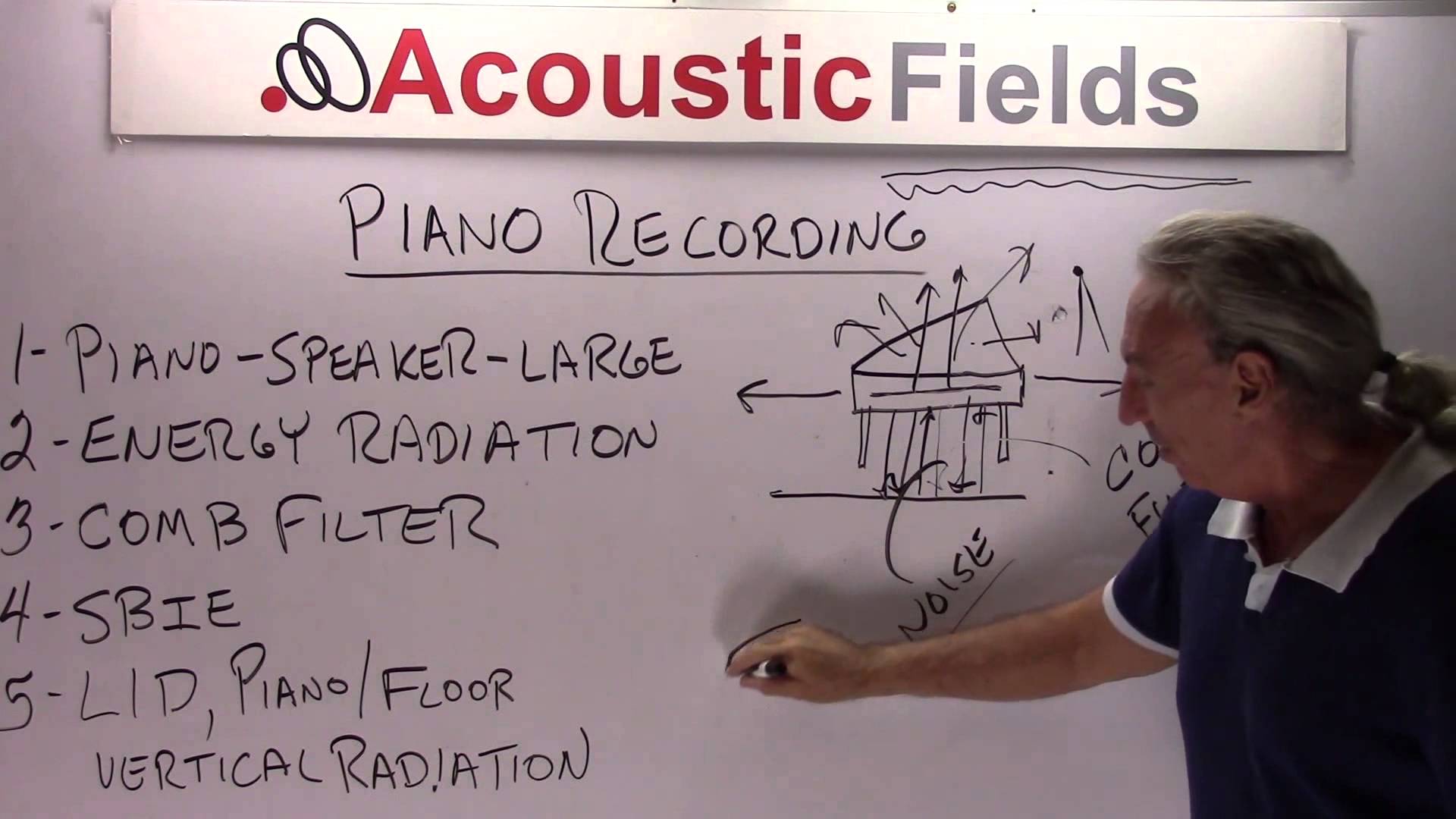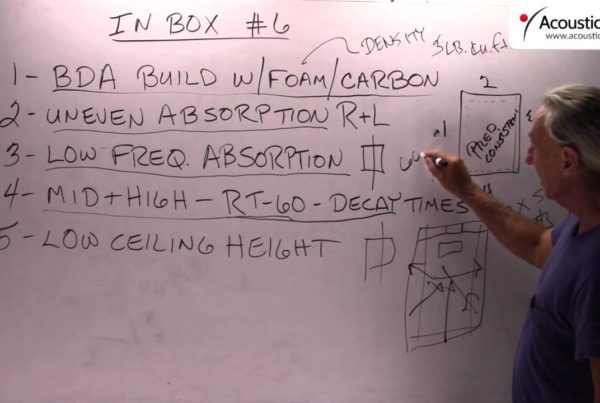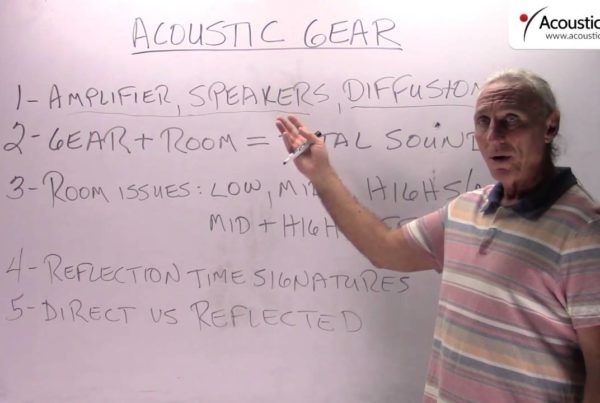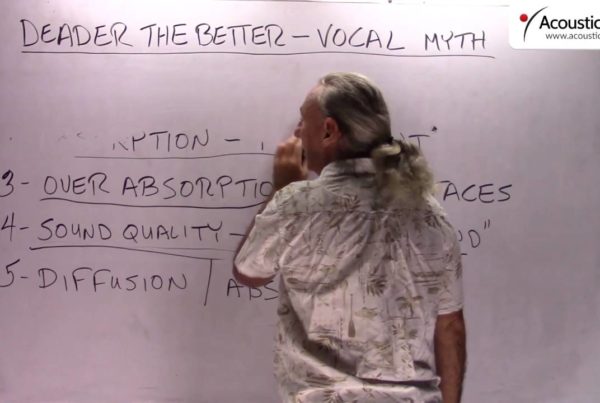Hi everyone, Dennis Foley from Acoustic Fields, today I want to talk a little bit about piano recording. I’ve been in a lot of studios in Los Angeles lately and some have these beautiful large rooms for pianos and some have these small rooms for pianos and I’ve been noticing a difference in the recording of the piano in different studios depend upon room size and volume. Of course that’s what I would listen for and not really enjoy the music but what do you do, you know?
So I’ve been noticing a difference if we keep the source constant, the size of the piano constant, most of the pianos I’ve been listening to are small grands or full-sized grands. So it’s a pretty big energy source, if you think of the piano as a speaker. And in the bed of the piano really this is our speaker. So it’s radiating energy upward, it’s radiating energy down to the floor also of course and then it’s radiating energy this way also depending on frequency.
So it’s this real kind of a 360 degree energy creating device. So what I’ve noticed in a lot of studios is this area here underneath the piano from the bed to the floor. Well, obviously this is a very very short distance and we all know from our past instructional videos that you know, we have to have distance, frequency, distance, all these are dependent upon each other. So we have to have some distance for the energy to unfold and not be restricted in any form or fashion.
So what do we get in this area? Well, we get what’s called comb filtering. And you all know from past videos that you know this is the interaction of the piano to the floor, the floor to the piano, the piano to the floor, the floor back to the piano. It’s this interplay of energy, going back and forth. Kind of trapped in this distance and time domain. Well, that produces noise. You can hear this. This is very audible. Depending on microphone positioning and placement, too, you have to be very very critical.
But what I noticed is that no studio really deals with this. They have the piano flat on the floor, wood floor, carpeting or something like that and it really doesn’t matter what the size of the volume of the room is. So this is a really critical area. If you want to test this out and we’ve done this before and I’m going to do another video, putting some full sheets of just foam underneath the piano and your playing of the recording. And listen to the difference. And then you’ll get the noise and the comb filtering interaction that goes on there.
Another issue I’ve been noticing is that there is a big difference in the recording quality between those that leave the lid on and those that take it off. Those that take it off seem to have a more open and spacious-sounding piano. Now makes sense logically but those that have it off also have very high ceilings with usually some form of acoustical treatment and it’s usually diffusion.
So by taking the lid off, the lid would be kind of like you know, speaker boundary interference effect basically. Your sound source is so close to a surface or a wall, the lid that you’re going to get all these spurious reflections going everywhere.
Now that may be desirable but I find the best quality recordings are those where the energy comes off the bed without striking an object first. Such as the lid going to the ceiling and then whatever the ceiling treatment is doing. If it’s diffusion, that’s great, if it’s absorption, okay. So whatever the treatment of the ceiling – so the energy is kind of free to be direct energy, at least direct towards the ceiling.
So a lot of issues here with piano and I’m noticing a lot of patterns in these recording studios that I see. So we’re going to do something about this. We’re going to do some testing and we’re going to develop some products that go underneath the piano that are really portable and put in – and tuneable depending on what kind of piano that you’re playing, what kind of energy that you’re doing.
So taking all the radiation patterns of the piano, don’t interrupt them, put them in a room that’s treated so the energy can live. Tune this area here underneath the piano and obviously watch how close we place the piano to room boundary surfaces because we don’t want any speaker boundary interference effect. Which is a cousin to comb filtering. So more on this later for future projects and thank you,
Dennis
—
This is an unedited transcript from our video series from Acoustic Fields. There will be some errors in grammar and sentence structure that occur during this translation process.
For complete understanding and comprehension, please view the video which is included in this text. For any additional information regarding this topic or others relating to room acoustics, please contact us directly at:
P: 520 – 392 – 9486
info@acousticfields.com







